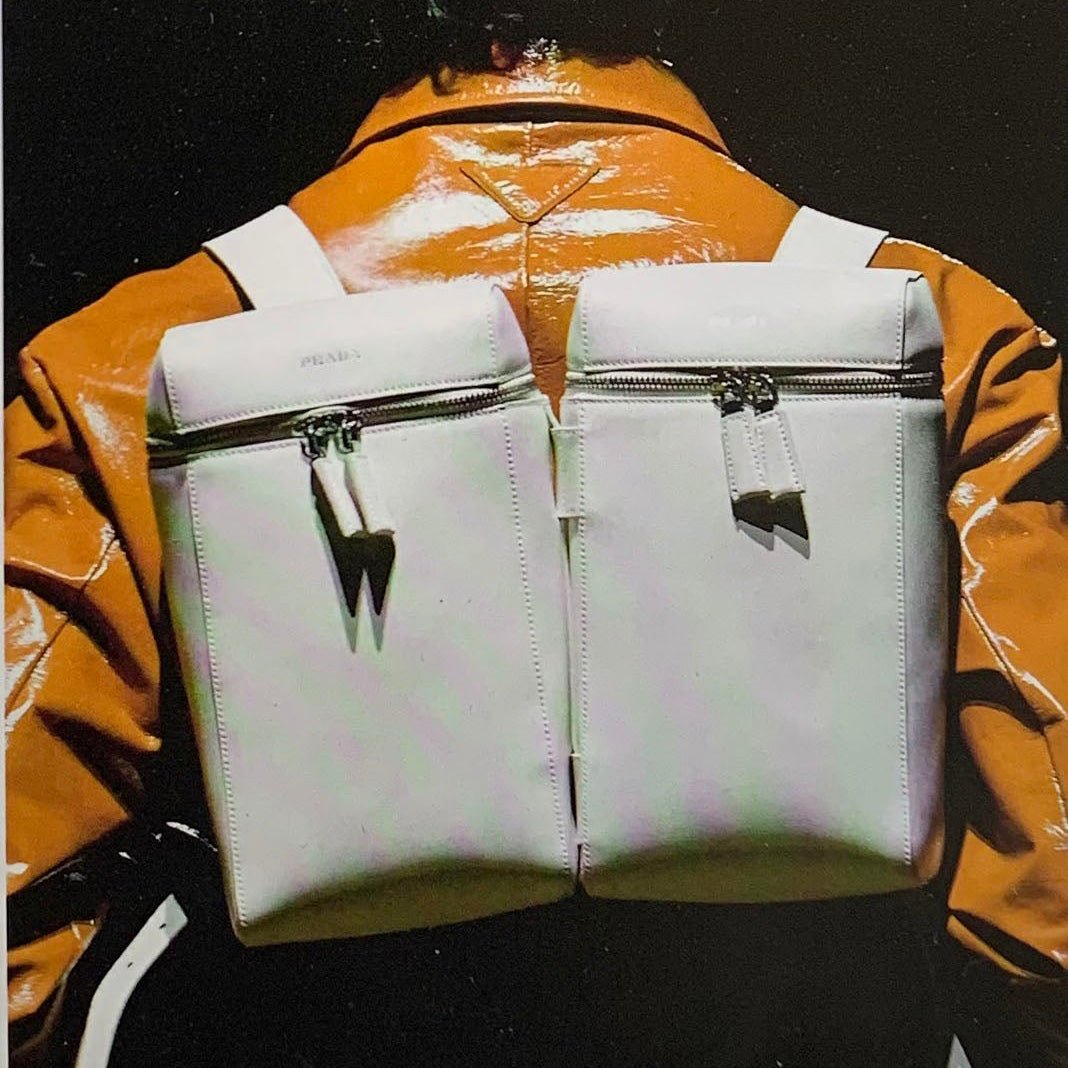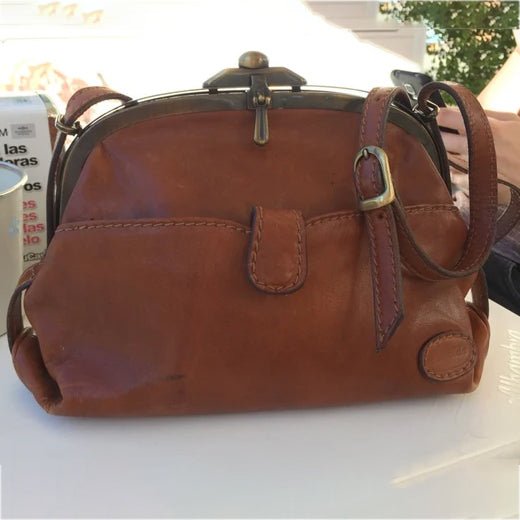
Design, sample and copy
I have been designing Harold's collections for over 20 years now.
I recently saw this Prada backpack in the elements SPECIAL EDITION NO. 16 issue of Textilwirtschaft. The reflection of the backpack was initially disconcerting, but upon closer inspection, there was no doubt—it's the design from the BOX series by Harold's. I immediately felt a bit odd: Had I copied the backpack? Did it actually look like that for a moment? If that were the case, would it have been irrelevant whether I did it consciously or unconsciously? I thought I was about to be sued. Given the confusion, I had some trouble remembering when I had designed the BOX design.

I first showed
BOX at Berlin Fashion Week at Neoyt. And then in two versions. That was in January 2019 at Tempelhof Airport, so about three years ago. I had been working on the box design for about a year beforehand – with models, drawings, and various materials, often accompanied by doubts as to whether the construction would work and whether it would even have market relevance. In the beginning – and this was an image I'd had in my head for several years – it was a messenger bag with a horizontal zipper. The idea stemmed from a time when messenger bags were very much in the spotlight. I was interested in the possibility of complete closure, the wide opening, and the use of materials – criteria that I repeatedly noticed as lacking in conventional messenger bag design. Ultimately, I hoped the idea of a horizontal zipper would open up new proportional and formal design possibilities. But I lacked the courage to approach the matter more concretely. So I looked for associations. Associations with things from the real or digital world are often a good guide in the design process. If they are cleverly incorporated without being taken too literally, they greatly help the user intuitively understand the innovative product: I was sitting in the morning train restaurant and watched as the waiter served a guest the breakfast he had ordered. It consisted of coffee, two rolls, an orange juice, jam, and an egg. After the first sip of coffee, the guest tapped the egg with a small spoon and then laboriously peeled off the broken pieces of the shell. Sometimes this doesn't work well because the pieces stick too tightly to the cooked egg white. Instead of coming loose, they break into even smaller pieces, and then nothing else works, and on top of that, the coffee has gone cold. Opening eggs can be a fundamental debate, with exclusive attitudes that rarely or never change. Cracking an egg open or cutting off its head – that can be on the level of the Beatles or the Stones. Anyway, the man took the knife and chopped off the egg's head, and, as expected, reached the yolk without further effort. He was happy. I was happy too. But not for him, but for myself. I now had the association with box design. The closed shape on one side and the horizontal cut at about three-quarters of the total height, allowing you to quickly and clearly access the core of the body. With this association, it was now clear how the zipper had to run in detail, which pattern the structural design of the bag body had to follow. Above all, however, I realized that you get a much better overview, you can see what's inside the bag – a lack of many pockets. This also opened up new proportional possibilities for the bag body. You could now cut the bag more slenderly than with conventional designs. So I had reached the inner essence of the bag. If you succeed in doing that, you only need to converse with this very essence and listen carefully to what it has to say. In the end, the answers are simply translated into material, cut, and seam. It's a very logical process, one that's very clear. I believe the Prada designers followed the same or a similar association and therefore inevitably arrived at the same result with the box design, in almost all the important details: the seams and cuts, the craftsmanship around the zipper, the choice of materials, the design of the bag's top closure. I felt validated and empowered, and my initial doubts about the bag's relevance were dispelled, at least for a moment. For this, I sincerely thank the designers of this Prada model. In the end, they took the design and mirrored it, resulting in a backpack with two compartments. In this respect, they took advantage of the greater slenderness of the cut. With a conventional bag body design, you would hardly find anything in it. However, the overall result defies my imagination. The doubling or repetition of the box-like body is somewhat reminiscent of bags developed for military purposes. But that may also be a false association. Perhaps the purist box design with a single chamber was too formal, too understated, and they were looking for a solution that would stand out more amidst the flood of images and products. In any case, even if they were already familiar with the original box design, they managed to create an interesting "sample" in the spirit of a good DJ.
And now I come to the final point of this post: In the history of bags, countless bags have been designed and produced. One must therefore assume that almost every design and every conceivable detail has already been realized. Based on this assumption, every seemingly new bag design, every new detail, is actually (only) a "sample" of a design that was already realized at some point, regardless of whether the author is aware of it or not. In the end, it doesn't matter whether you actually developed a design yourself down to its individual details.







Leave a comment
This site is protected by hCaptcha and the hCaptcha Privacy Policy and Terms of Service apply.